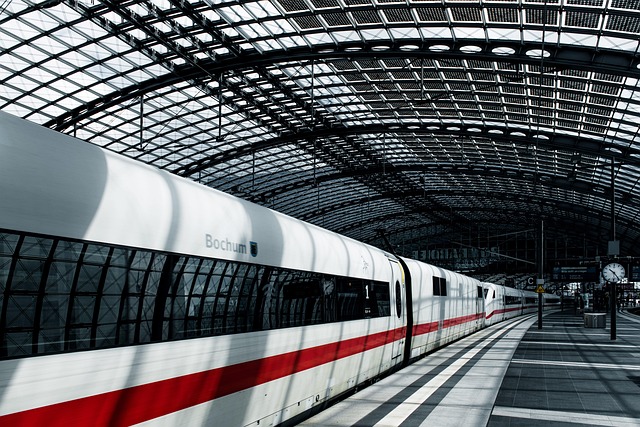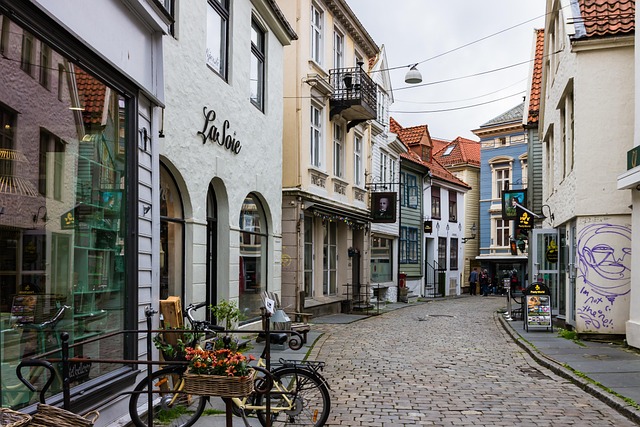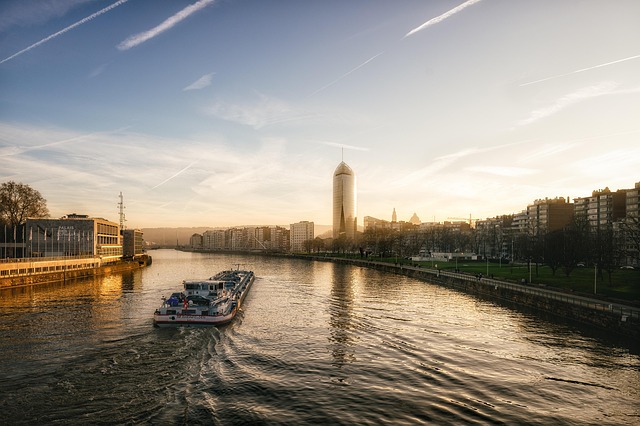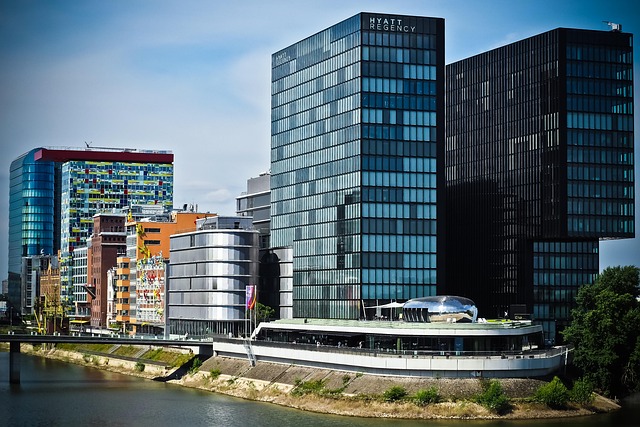Category: Civil Lines
Civil Lines: Shaping Urban Spaces and Communities
Introduction
In the ever-evolving landscape of urban development, “Civil Lines” emerge as a transformative concept, redefining how we design, construct, and manage public spaces. This comprehensive approach goes beyond traditional urban planning, integrating social, economic, and technological elements to create vibrant, resilient, and inclusive communities. In this article, we embark on an in-depth exploration of Civil Lines, unraveling its multifaceted aspects and uncovering its profound impact on modern cities worldwide. By delving into its history, global reach, economic implications, technological innovations, policy frameworks, and real-world applications, we aim to provide a comprehensive understanding of this dynamic phenomenon.
Understanding Civil Lines: Unveiling the Concept
Definition: Civil Lines is an innovative urban planning philosophy that emphasizes the holistic development of cities, prioritizing the well-being and engagement of citizens. It involves the strategic integration of physical infrastructure, social services, cultural initiatives, and technological solutions to create functional, aesthetically pleasing, and socially cohesive urban environments.
Core Components:
- Public Space Design: This includes parks, plazas, and community hubs that foster interaction, recreation, and a sense of belonging.
- Sustainable Infrastructure: Emphasizing green spaces, pedestrian-friendly paths, efficient transportation systems, and renewable energy sources.
- Social Services and Amenities: Access to quality education, healthcare facilities, cultural centers, and affordable housing is central to the concept.
- Technological Integration: Leveraging technology for smart cities, digital services, improved communication, and enhanced public safety.
- Community Engagement: Encouraging citizen participation in decision-making processes through inclusive workshops, surveys, and feedback mechanisms.
Historical Context: The term “Civil Lines” has its roots in the mid-20th century when urban planners sought to address the growing challenges of rapid urbanization. Traditional planning methods struggled to keep up with the demands of expanding cities, leading to issues like traffic congestion, pollution, and social segregation. In response, forward-thinking architects and urbanists proposed a more comprehensive approach that treated cities as living organisms, where every element is interconnected. Over time, Civil Lines evolved from a theoretical concept to a practical framework adopted by municipalities worldwide.
Significance: Civil Lines holds immense value in today’s complex urban environment. It addresses the multifaceted needs of modern cities, moving beyond mere physical development to encompass social, economic, and environmental sustainability. By considering all aspects of city life, it fosters a sense of community, enhances quality of life, and prepares cities for future challenges.
Global Impact and Trends
The influence of Civil Lines extends across continents, with cities adopting its principles to create unique urban landscapes. Here’s an overview:
| Region | Notable Examples | Key Trends |
|---|---|---|
| North America | Toronto, Canada; New York City, USA | Focus on smart city technologies, mixed-use development, and public art initiatives. |
| Europe | Berlin, Germany; Amsterdam, Netherlands | Emphasis on cycling infrastructure, green spaces, and community-driven urban renewal. |
| Asia Pacific | Singapore; Tokyo, Japan | High-density planning, efficient transportation networks, and cultural integration through architecture. |
| Latin America | São Paulo, Brazil; Buenos Aires, Argentina | Community gardens, public housing projects, and revitalized waterfronts. |
| Middle East | Dubai, UAE; Doha, Qatar | Iconic architecture, sustainable design, and leisure-focused urban development. |
These global trends reflect the adaptability of Civil Lines, as each city interprets and implements its principles to suit local contexts. The widespread adoption indicates a growing recognition of the need for comprehensive urban planning in the face of rapid urbanization and changing societal demands.
Economic Considerations: Driving Urban Growth
Civil Lines has far-reaching economic implications, shaping the dynamics of urban economies:
- Market Dynamics: The development of vibrant public spaces and amenities attracts businesses, stimulates local markets, and fosters entrepreneurship.
- Investment Patterns: Civil Line projects often attract significant investments from both public and private sectors, contributing to economic growth.
- Tourism Boost: Well-designed public areas and cultural initiatives can transform cities into tourist destinations, enhancing local economies.
- Affordable Housing: By integrating social housing with mixed-use developments, Civil Lines addresses homelessness and provides sustainable housing options.
- Job Creation: Construction and maintenance of Civil Line projects generate employment opportunities, contributing to unemployment reduction.
Technological Advancements: Smart Cities in Action
Technology plays a pivotal role in the realization of Civil Lines, giving rise to the concept of smart cities:
- Internet of Things (IoT): Sensors and connected devices enhance city services, optimizing traffic flow, energy consumption, and waste management.
- Big Data Analytics: Analyzing citizen data enables better decision-making, personalized services, and improved public safety measures.
- Artificial Intelligence (AI): AI-powered systems can predict maintenance needs, optimize public transport routes, and enhance security surveillance.
- 5G Networks: Faster connectivity supports real-time data exchange, enabling efficient city management and citizen engagement.
- Digital Governance: Online platforms streamline government services, making them more accessible and transparent.
These technological advancements not only improve the efficiency of Civil Line projects but also empower citizens with greater control over their urban environments.
Policy and Regulation: Shaping the Framework
The successful implementation of Civil Lines relies on robust policy frameworks and regulatory mechanisms:
- Land Use Planning: Comprehensive zoning regulations ensure that land is utilized efficiently, balancing residential, commercial, and green spaces.
- Environmental Policies: Strict environmental standards guide sustainable infrastructure development, preserving natural resources.
- Community Participation: Policies encouraging citizen engagement ensure that projects meet local needs and gain community buy-in.
- Public-Private Partnerships (PPPs): These partnerships leverage private sector expertise and funding for public project implementation.
- Regulatory Oversight: Independent bodies monitor project progress, ensuring compliance with environmental, social, and economic standards.
Challenges and Criticisms: Overcoming Barriers
Despite its numerous benefits, Civil Lines faces several challenges and criticisms:
- Funding Constraints: Large-scale projects often require substantial financial resources, posing a challenge in budget-constrained municipalities.
- Community Displacement: Redevelopment initiatives can lead to the displacement of long-time residents, requiring careful planning to mitigate social impact.
- Political Will: Lack of sustained political commitment may hinder project continuity and long-term success.
- Technological Divide: Inequitable access to technology can exclude marginalized communities from the benefits of smart city solutions.
- Cultural Sensitivity: Urban renewal projects must respect local cultures and traditions, avoiding cultural homogenization.
Strategies for Overcoming Challenges:
- Diversify funding sources through public-private partnerships and innovative financing mechanisms.
- Implement community relocation plans that offer affordable housing options and support services.
- Foster political will by highlighting the long-term benefits of Civil Lines to local governments and citizens.
- Bridge the digital divide through digital literacy programs and accessible technology deployment.
- Encourage cultural diversity and participation in project design to create inclusive urban spaces.
Case Studies: Successful Implementations
1. Copenhagen’s Green Infrastructure:
Copenhagen, Denmark, has transformed its cityscape with a Civil Line approach, focusing on sustainable infrastructure and green spaces. The “Green Copenhagen” initiative includes the creation of numerous parks, bike lanes, and pedestrian-friendly zones, reducing traffic congestion and pollution. This holistic approach has made Copenhagen one of the world’s most walkable and bike-friendly cities, attracting tourists and promoting a healthier lifestyle for residents.
2. Rio de Janeiro’s Urban Renewal:
The iconic city of Rio de Janeiro, Brazil, undertaken a significant urban renewal project ahead of the 2016 Olympic Games. The Civil Line strategy involved revamping public spaces, improving transportation infrastructure, and developing affordable housing. The transformation of the once-neglected favelas (slums) into vibrant communities is a testament to the power of Civil Lines in addressing social inequality and enhancing urban quality of life.
3. Dubai’s Smart City Vision:
Dubai, UAE, has embarked on an ambitious journey to become a global smart city leader. Their Civil Line project includes integrating advanced technologies like AI, IoT, and blockchain into daily services. The “Happy City” initiative focuses on citizen well-being, offering digital healthcare, education platforms, and efficient public transport. This case study exemplifies how technology and innovative policies can create a highly functional and technologically advanced urban environment.
Future Prospects: Emerging Trends and Growth Areas
The future of Civil Lines is brimming with potential, as cities continue to embrace technological advancements and sustainable development practices. Here are some key trends:
- Sustainable Smart Cities: The integration of environmental sustainability into smart city initiatives will be a focus, with a push for green energy, waste reduction, and circular economy principles.
- Digital Democracy: Online platforms will facilitate direct citizen engagement in urban planning, fostering a more transparent and responsive government.
- Age-Friendly Urbanism: Designing cities for all ages, including the elderly, will gain prominence, ensuring inclusivity and improved quality of life.
- Cultural Corridors: Encouraging cultural exchange through dedicated corridors and events will celebrate diverse communities and promote social cohesion.
- Resilient Infrastructure: Cities will invest in resilient infrastructure to cope with climate change impacts, ensuring the long-term viability of Civil Line projects.
Conclusion: Building the Cities of Tomorrow
Civil Lines represents a holistic and forward-thinking approach to urban development, offering a comprehensive framework for creating vibrant, sustainable, and inclusive communities. Through its integration of physical, social, economic, and technological elements, it addresses the multifaceted challenges of modern cities. As urbanization continues to shape our world, Civil Lines will play a pivotal role in building the cities of tomorrow, where citizens thrive, communities flourish, and the urban environment is a source of pride and inspiration.
FAQ Section: Addressing Common Concerns
Q: How does Civil Lines differ from traditional urban planning?
A: Civil Lines goes beyond traditional planning by integrating social, economic, and technological aspects, creating a more holistic and inclusive city environment. It treats cities as living ecosystems where all elements are interconnected.
Q: Can Civil Line projects be affordable for municipalities with limited budgets?
A: Yes, many successful Civil Line initiatives have been implemented with creative funding strategies, including public-private partnerships, grants, and innovative financing mechanisms. Diversifying funding sources is key to making these projects sustainable.
Q: What role does technology play in the success of Civil Lines?
A: Technology is a cornerstone of Civil Lines, enabling smart city solutions that enhance efficiency, improve citizen services, and foster engagement. From IoT sensors to AI-powered systems, technology brings Civil Line projects to life and ensures their long-term viability.
Q: How can communities be involved in the planning process?
A: Community participation is a core principle of Civil Lines. Local residents can engage through workshops, surveys, feedback sessions, and community advisory boards. Their input ensures that projects align with local needs and gain social acceptance.
Q: Are there any global examples of successful Civil Line implementations?
A: Absolutely! Cities like Copenhagen, Rio de Janeiro, and Dubai have successfully embraced Civil Lines principles, transforming urban landscapes and improving the quality of life for their residents. These case studies serve as valuable models for other municipalities worldwide.









